Preferences
In this section, you will learn a group of preferences is available on diagram popup menu.
Right click the class/package dependency diagram, it will popup a menu, select Preferences.There are six functions are available
- Stereotype display
- Package indications
- Package name format
- Wire automation
- Rulers & Grid
- Element views
1. Stereotype display
Stereotype preferences allows you to choose:
- Show stereotype on packages
- Show stereotype on classes
- Show stereotype on interfaces
- Show stereotype on enumerations
- Show stereotype on dependencies

For example, if you select on dependencies, it will shows stereotype on class/pakcage dependency diagram
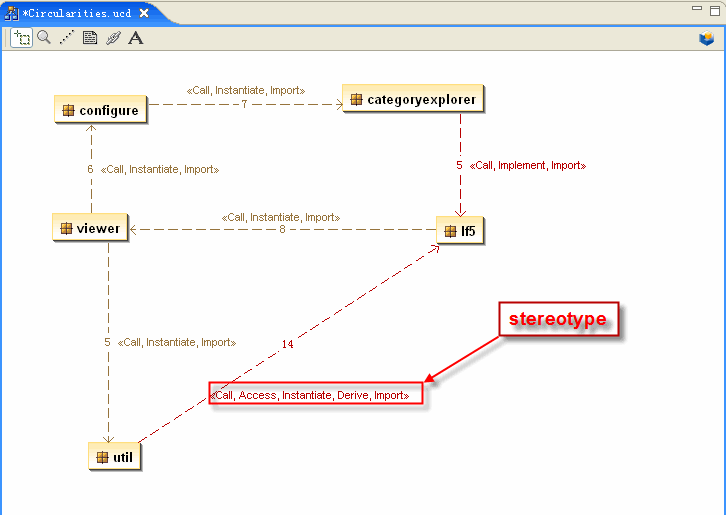
2. Package indications
Four ways of Package indications are available :
- No indication (only the class name is displayed)
- Prefix(UML format)
- Prefix(JAVA format)
- Subtitle of class name(Classes from a different package are subtitled with their package name)
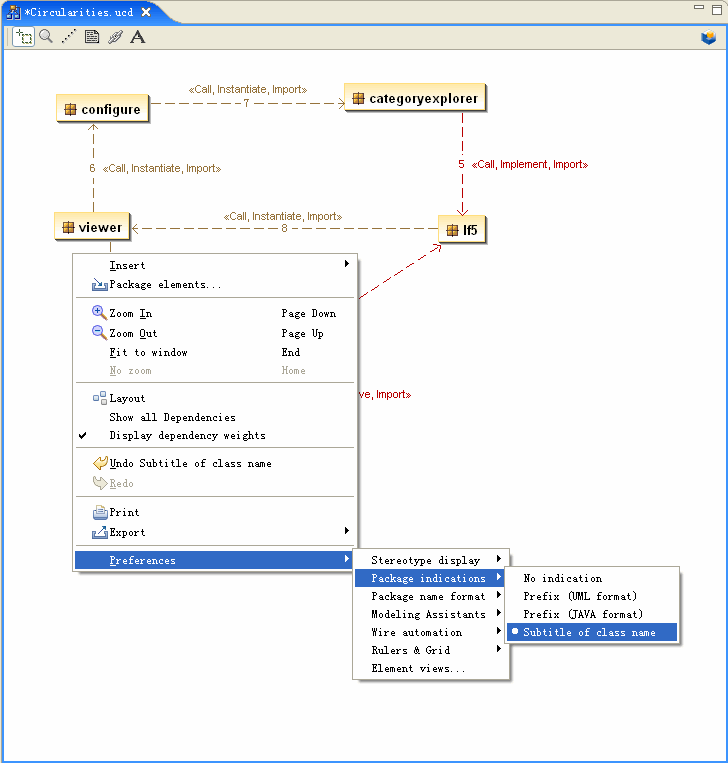
3. Package name format
This feature allows you to display the name of package in short name or full name in your class/package dependency diagram
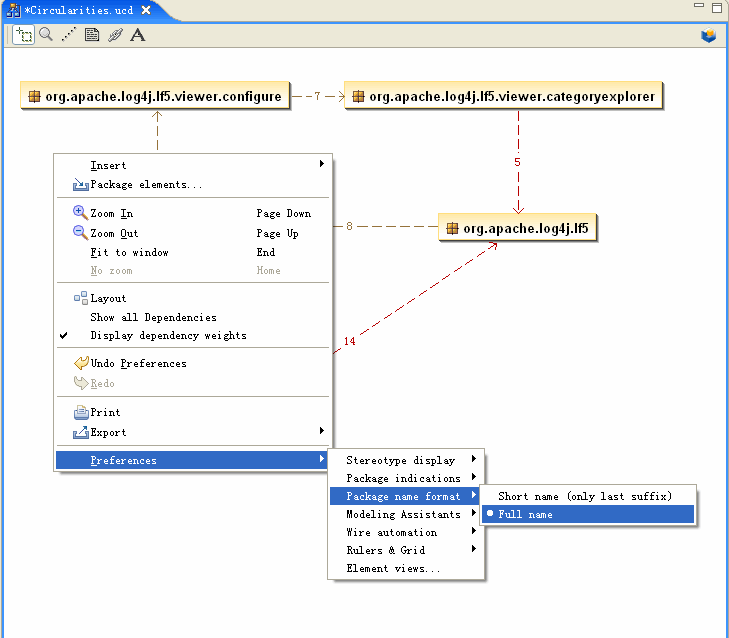
For example, select Full name,it will show package name like this
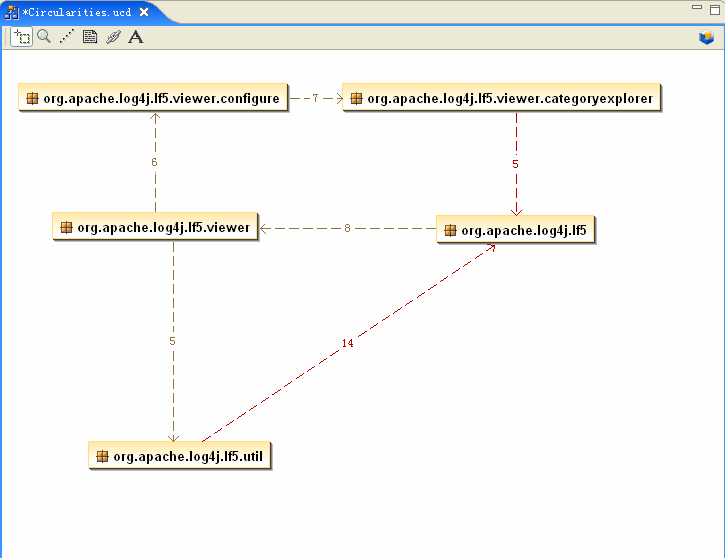
While, select Short name, it will show package name like this
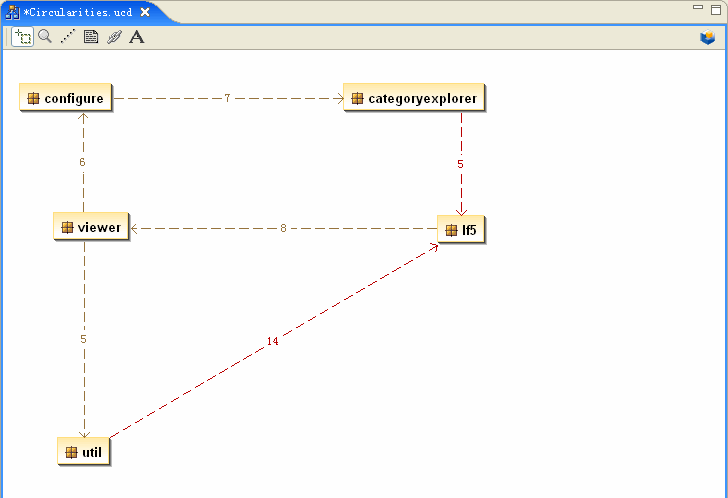
4. Wire automation
This preference allow you to connect elements automatically, three options are available:
- Association
- Inheritance
- Dependency
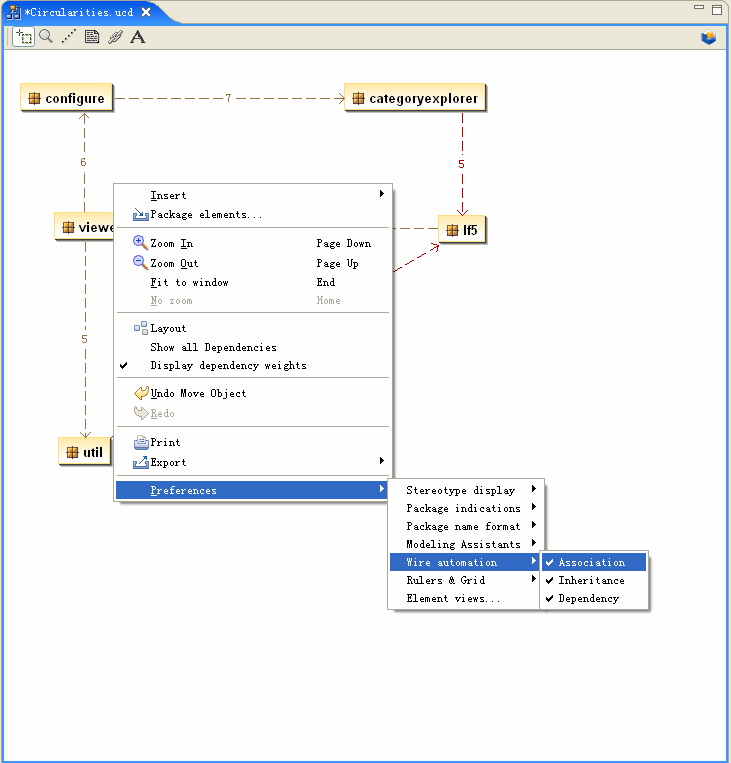
5. Rulers & Grid
Options are proposed to configure the diagram grid and ruler.
Five options are available:
- Grid Enabled
- Grid Visible
- Ruler visibility
- Snap Enabled
- Advanced...
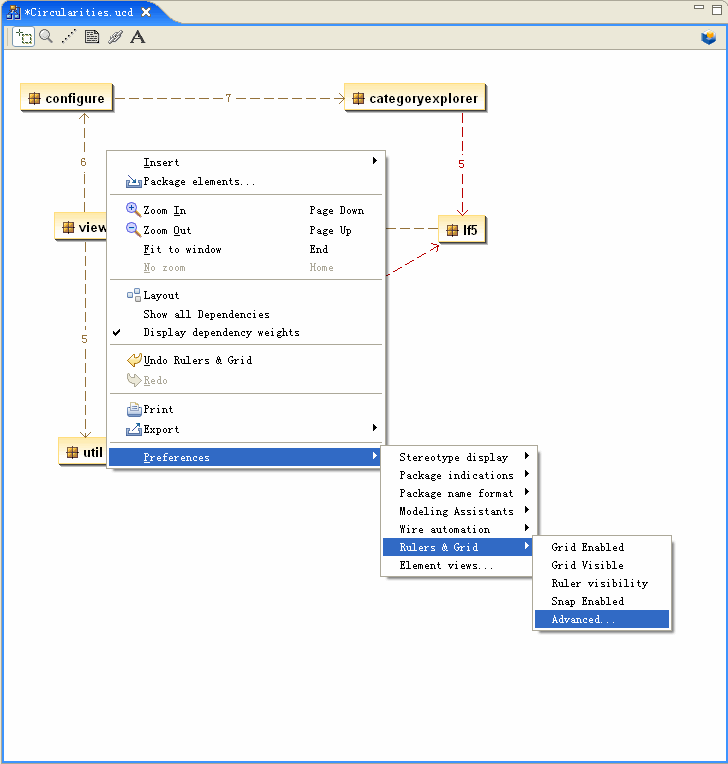
Select Advanced to choose several options at one time
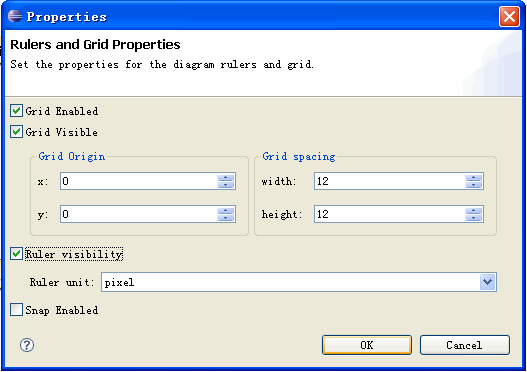
6. Element views
Three options are available:
- Attributes
- Methods
- Inner classes
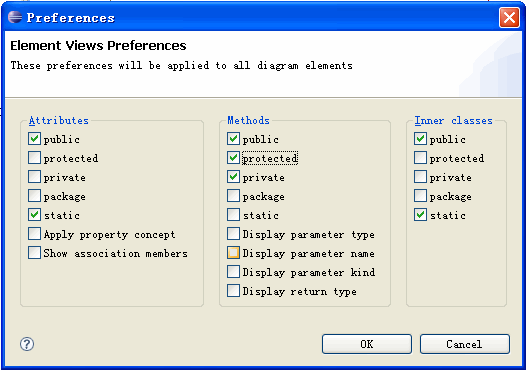
6.1 Attributes
This preference allows you to choose which attributes will be visible in your class/package dependency diagram
Multiple possibilities are provided :
- Public (The public attributes will be visible)
- Protected (The protected attributes will be visible)
- Private (The private attributes will be visible)
- Package (The package attributes will be visible. An attribute without visibility modifier has the package visibility)
- Static (The static attributes will be visible if their visibilities are visible)
- Apply property concept (The attributes and their accessors will be displayed as properties)
- Show association members (The attributes which are association ends will be displayed)
6.2 Methods
This preference allows you to choose which methods will be visible in your class/package dependency diagram
Multiple possibilities are provided :
- Public (The public methods will be visible)
- Protected (The protected methods will be visible)
- Private (The private methods will be visible)
- Package (The package methods will be visible. An methods without visibility modifier has the package visibility)
- Static (The static methods will be visible if their visibilities are visible)
- Display parameter type (Parameter type is visible)
- Display parameter name (Parameter name is visible)
- Display parameter kind (Parameter kinds are visible)
- Display return type (Method return type is visible)
6.3 Inner classes
This preference allows you to choose which inner classes will be visible in your class/package dependency diagram
Multiple possibilities are provided :
- Public (The public inner classes will be visible)
- Protected (The protected inner classes will be visible)
- Private (The private inner classes will be visible)
- Package (The package inner classes will be visible. An attribute without visibility modifier has the package visibility)
- Static (The static inner classes will be visible if their visibilities are visible)










